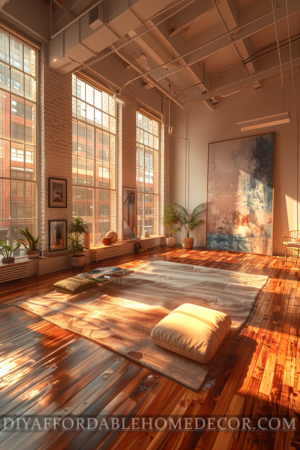 Interior design projects bring transformation and challenge of balancing functionality with aesthetics. Whether you’re aiming to carve out a career in interior design or you’re a homeowner eager to infuse your space with a fresh vibe, a solid understanding of interior design fundamentals is your starting point. Let’s delve into the essential concepts that will guide you in crafting spaces that are both beautiful and livable.
Interior design projects bring transformation and challenge of balancing functionality with aesthetics. Whether you’re aiming to carve out a career in interior design or you’re a homeowner eager to infuse your space with a fresh vibe, a solid understanding of interior design fundamentals is your starting point. Let’s delve into the essential concepts that will guide you in crafting spaces that are both beautiful and livable.
The Foundation: Core Elements of Interior Design
At the heart of every captivating interior lies a blend of seven fundamental elements. These components are the building blocks of design, each playing a pivotal role in shaping the character of a room.
Space: The Canvas of Design
- Understanding Space: Recognizing the dimensions and layout of your space is crucial. It’s about seeing beyond the empty room to its potential, understanding how each area can be maximized or minimized to serve your design goals.
Line: Defining Spaces and Shapes
- Crafting with Lines: Lines shape a room and direct the eye. They establish harmony, balance, and contrast. Horizontal lines elongate spaces, vertical lines heighten them, and dynamic lines add motion and excitement.
Form: The Geometry of Style
- Exploring Forms: Forms or shapes within a room contribute to its overall feel. Geometric forms offer a structured look, while natural forms lend an organic, free-flowing touch. The interplay between forms can create a narrative within your space.
Light: The Mood Maker
- Illuminating with Light: Light, whether it’s bathing a room in natural sunlight or accentuating spaces with artificial lighting, dramatically alters the ambiance, colors, and perceived size of your interior. It’s a transformative element that can dictate the mood of a room.
Color: Painting Emotions
- Color Theory in Practice: Color is a powerful tool in setting the emotional tone of a room. From serene blues and greens to vibrant reds and yellows, your color choices can energize or calm a space, making it crucial to understand color psychology.
Texture: Depth and Dimension
- The Impact of Texture: Texture brings a tactile dimension to interiors, offering visual weight and depth. A mix of textures – whether it’s the gloss of polished metal or the roughness of brick – can elevate a room’s aesthetic and sensory experience.
Pattern: Weaving Interest into Interiors
- Pattern Play: Patterns, whether in wallpaper, textiles, or art, inject vitality and rhythm into a space. The key is in the balance; too much can overwhelm, while the right amount can harmonize and enliven a room.
Embarking on Your Design Journey
With these core elements as your guide, you’re equipped to explore the vast and vibrant world of interior design. Remember, each project is a canvas waiting for your unique touch. By understanding and applying these fundamental principles, you’ll create spaces that not only look spectacular but feel right for the people who live in them.
Top Interior Design Books for Beginners
If you’re looking to dive deeper, books are a treasure trove of knowledge. Here are the top 10 interior design books for beginners:
-
- “The Elements of Style“ – A classic that covers the basics of modern design.
- “Homebody” – A modern haven of design inspiration.
- “The Design of Everyday Things“ – Focuses on usability in design.
- “Sustainable Home“ – Focuses on eco-friendly design principles.
- “The Elements of Style“ – Covers everything from color palettes to furniture selection.
Incorporating Modern Design Trends
The world of interior design is ever-evolving. For 2023, the focus is on bold colors, gradients, asymmetry, and minimalist principles. To stay ahead, consider incorporating these elements into your home décor.
Unlocking Room Design Secrets
Effective room design goes beyond just placing furniture. It involves:
- Furniture Arrangement: The layout can make or break a room.
- Color Schemes: Choose colors that complement each other.
- Lighting: Proper lighting can enhance your furniture and décor.
The Role of Interior Design Procurement
Procurement is more than just buying furniture and décor. It involves sourcing the best materials and services to complete your design project. Whether it’s custom-made furniture or off-the-shelf solutions, effective procurement can make a significant difference in your project’s success.
Exploring Additional Resources and Support
The American Society of Interior Designers (ASID) offers a plethora of resources for aspiring designers. From webinars to publications, ASID provides a connected community of peers where you can seek inspiration and support.
Interior design is a fascinating and complex field, but with the right resources and a bit of creativity, anyone can create stunning and functional spaces. So why wait? Unleash your creativity and transform your living space today!